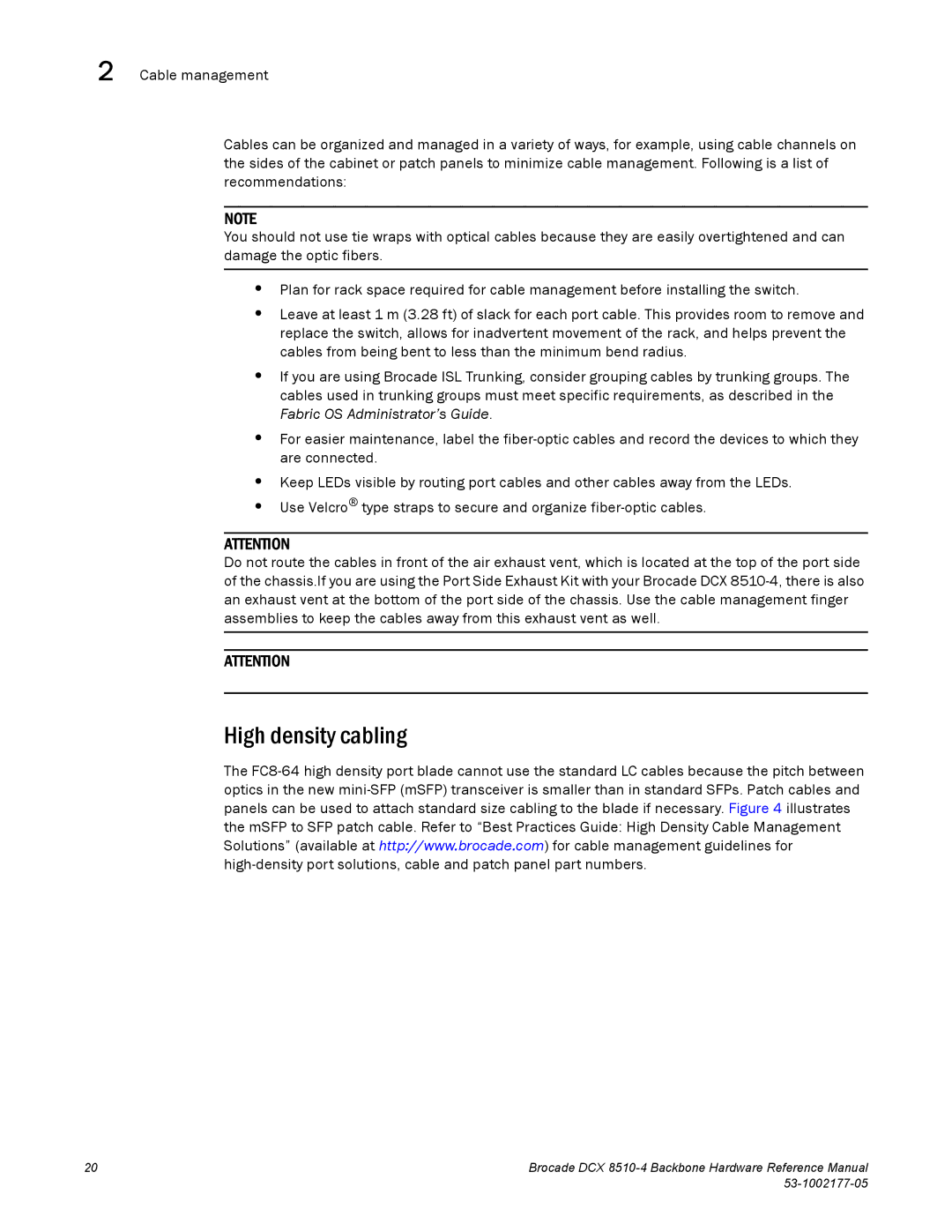
2 Cable management
Cables can be organized and managed in a variety of ways, for example, using cable channels on the sides of the cabinet or patch panels to minimize cable management. Following is a list of recommendations:
NOTE
You should not use tie wraps with optical cables because they are easily overtightened and can damage the optic fibers.
•Plan for rack space required for cable management before installing the switch.
•Leave at least 1 m (3.28 ft) of slack for each port cable. This provides room to remove and replace the switch, allows for inadvertent movement of the rack, and helps prevent the cables from being bent to less than the minimum bend radius.
•If you are using Brocade ISL Trunking, consider grouping cables by trunking groups. The cables used in trunking groups must meet specific requirements, as described in the Fabric OS Administrator’s Guide.
•For easier maintenance, label the
•Keep LEDs visible by routing port cables and other cables away from the LEDs.
•Use Velcro® type straps to secure and organize
ATTENTION
Do not route the cables in front of the air exhaust vent, which is located at the top of the port side of the chassis.If you are using the Port Side Exhaust Kit with your Brocade DCX
ATTENTION
High density cabling
The
20 | Brocade DCX |
|
